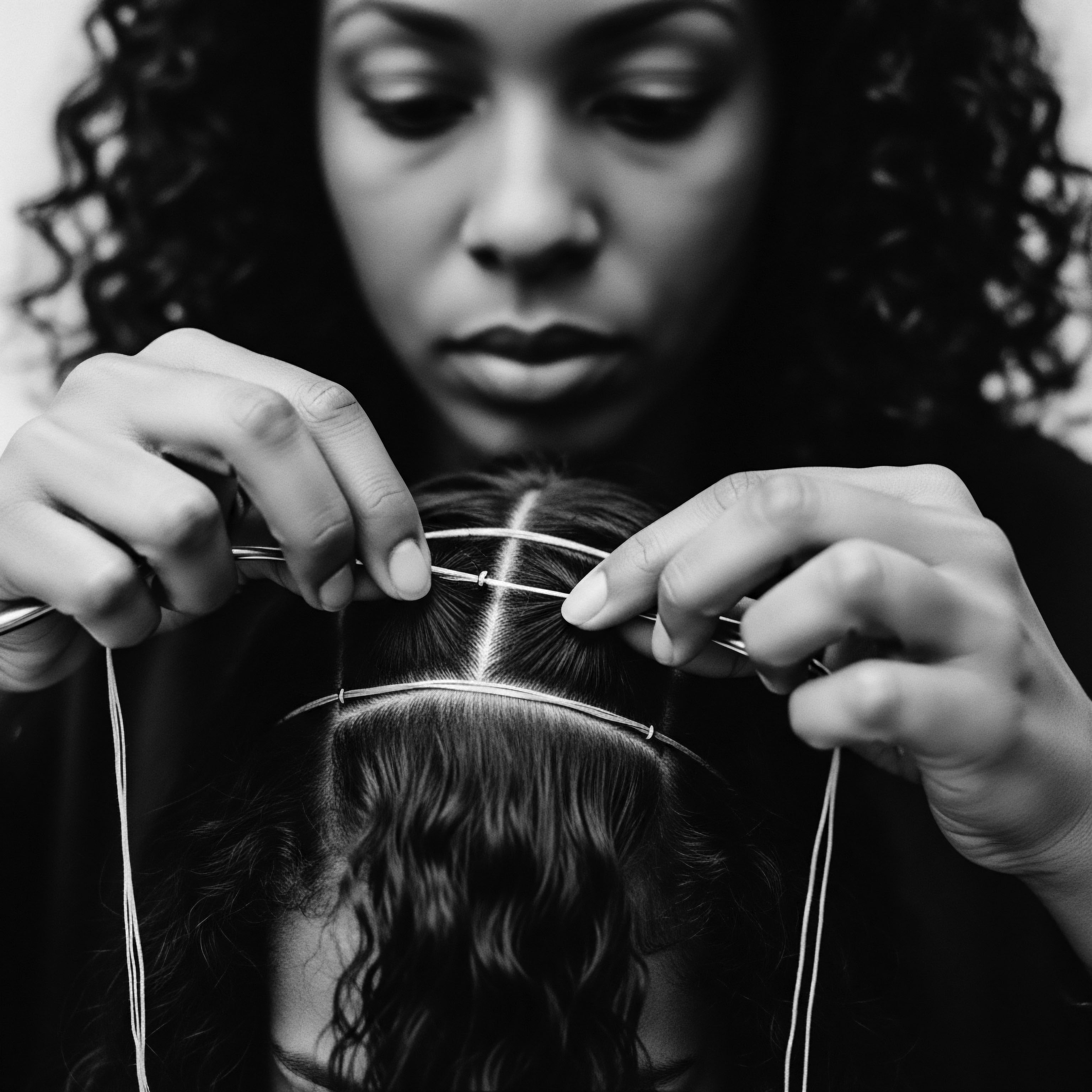
Fundamentals
Hair Care Innovation, at its simplest, refers to the ongoing development of novel products, techniques, and tools designed to maintain the health, appearance, and manageability of hair. This encompasses advancements in chemical formulations, mechanical devices, and even the conceptual shifts in how we approach hair care. For those new to the discourse surrounding textured hair, particularly within the Roothea ‘living library,’ understanding this concept extends beyond mere product efficacy. It connects to the very spirit of preservation and adaptation that has characterized Black and mixed-race hair traditions for centuries.
The core meaning of Hair Care Innovation, especially through the lens of textured hair heritage, involves a dynamic interplay between inherited wisdom and contemporary discovery. It is not solely about creating something entirely new; it also encompasses the refinement and reinterpretation of ancestral practices using modern insights. This often means identifying the active components in traditional plant-based remedies or understanding the biomechanical principles behind ancient protective styles. The objective is to enhance the innate resilience and beauty of textured hair, recognizing its unique structural and physiological characteristics.
Hair Care Innovation, viewed through the ancestral lens, is the evolving dialogue between ancient wisdom and modern understanding, continually seeking to honor and enhance textured hair.

Echoes from the Source ❉ Ancestral Beginnings
The earliest forms of hair care were, in themselves, profound innovations, born from a deep connection to the natural world and a necessity for survival and communal identity. In ancient African societies, hair was more than an adornment; it served as a powerful communicator of one’s identity, marital status, age, religion, wealth, and communal rank. The meticulous styling and adornment of hair were not superficial acts but integral rituals that bound individuals to their lineage and community. The very act of caring for hair was a communal endeavor, fostering bonds and transmitting generational knowledge.
- Natural Ingredients ❉ Early African communities utilized an array of natural elements for hair care, including plant extracts, oils, and clays. Shea butter, derived from the nuts of the Shea tree, was a revered ingredient for both skin and hair, valued for its moisturizing properties. Other botanical treasures like marula oil and various herbs played a significant role in conditioning and protecting hair from harsh environmental conditions.
- Protective Styles ❉ Techniques such as braiding, twisting, and threading were not merely aesthetic choices but served a vital function in protecting hair from damage, particularly in challenging climates. These styles also acted as a visual language, with specific patterns conveying messages within the community.
- Communal Rituals ❉ Hair care was often a shared experience, a time for storytelling, teaching, and strengthening familial ties. The practice of washing, oiling, and styling hair was a ritual passed down through generations, embodying a collective understanding of hair health and cultural expression.
These initial innovations, born of keen observation and resourceful application of nature’s bounty, laid the groundwork for all subsequent developments. They underscore a foundational understanding that hair care is intrinsically linked to wellbeing, identity, and the environment. The traditions of care, born from these ancestral roots, continue to inform contemporary approaches to textured hair.
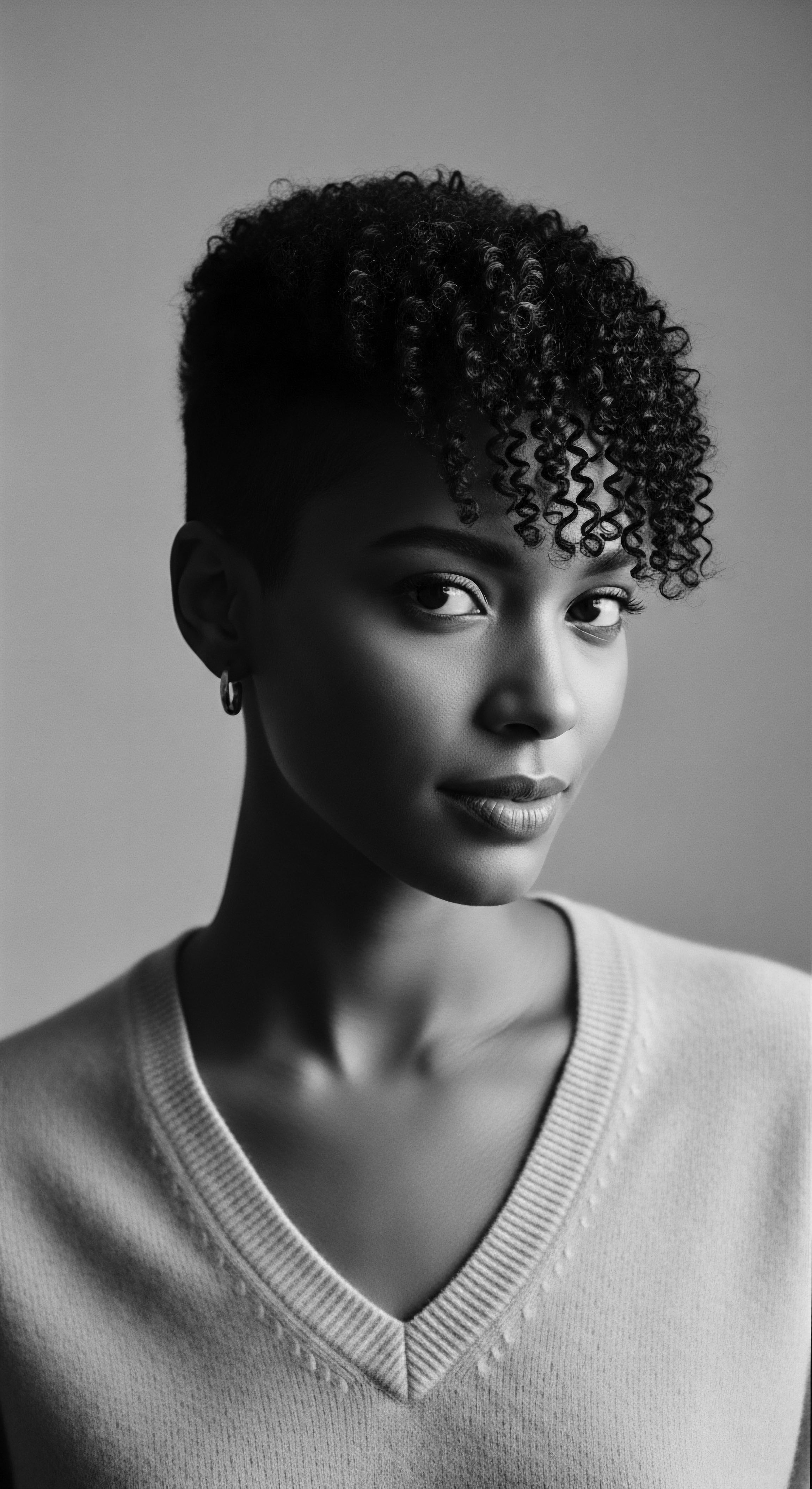
Intermediate
Moving beyond the fundamental grasp, the intermediate meaning of Hair Care Innovation expands to encompass the deliberate evolution of practices and products in response to specific challenges and aspirations within textured hair communities. This involves recognizing how historical adversities, such as the transatlantic slave trade, profoundly impacted hair care traditions, forcing adaptation and resilience. Enslaved Africans were often stripped of their traditional grooming tools and practices, their heads forcibly shaved as a dehumanizing act designed to erase their identity and sever their connection to their heritage. Despite these brutal efforts, the ingenuity of Black people led to new forms of hair care, using what was available and maintaining a powerful, silent expression of identity.
The significance of Hair Care Innovation at this level lies in its dual role ❉ addressing practical hair needs while simultaneously serving as a vehicle for cultural reclamation and self-affirmation. It is a continuous dialogue between necessity and artistic expression, a testament to enduring spirit. The period following emancipation and into the 20th century saw the rise of entrepreneurs like Madam C.J.
Walker, who innovated products specifically for Black hair, creating not only a beauty industry but also a pathway for economic empowerment and community building. Her “Walker System” provided a comprehensive approach to hair care, including scalp preparations and pomades, which, while sometimes associated with straightening, also aimed to improve hair health and manageability.

The Tender Thread ❉ Adaptations and Resilience
The journey of textured hair through history is marked by profound adaptations, transforming moments of oppression into opportunities for creative expression and communal strength. Hair became a covert language during slavery, with cornrow patterns used to create maps for escape routes or to hide seeds for survival. This ingenuity demonstrates an unparalleled level of Hair Care Innovation, where styling transcended aesthetics to become a tool of resistance and a keeper of hope.
| Era/Context Pre-Colonial Africa |
| Traditional Practice/Innovation Intricate Braiding & Adornment |
| Purpose & Connection to Heritage Signified social status, age, marital status, and spiritual connection. A visual language of identity. |
| Era/Context Transatlantic Slave Trade |
| Traditional Practice/Innovation Cornrow Maps & Seed Concealment |
| Purpose & Connection to Heritage A method of resistance and survival, encoding escape routes and preserving sustenance within hairstyles. |
| Era/Context Early 20th Century (USA) |
| Traditional Practice/Innovation Madam C.J. Walker's System |
| Purpose & Connection to Heritage Addressed specific needs of Black hair, promoting health and manageability while building economic independence within the community. |
| Era/Context Mid-20th Century (USA) |
| Traditional Practice/Innovation The Afro Hairstyle |
| Purpose & Connection to Heritage A powerful statement of Black pride and unity, challenging Eurocentric beauty norms during the Civil Rights Movement. |
| Era/Context These historical instances highlight the enduring spirit of Hair Care Innovation within textured hair communities, always rooted in cultural significance and resilience. |
The emergence of the natural hair movement in the 1960s and 70s represented a significant shift, where embracing natural textures became a powerful statement against Eurocentric beauty standards. This period saw a renewed focus on hair care that honored the natural curl patterns, moving away from chemical alterations. This was not simply a trend; it was a cultural awakening, a collective declaration of self-acceptance and pride in ancestral roots.
The current landscape of Hair Care Innovation for textured hair continues this legacy, with a growing emphasis on gentle, sulfate-free formulations that protect the hair without stripping its natural oils. Consumers actively seek products that infuse moisture and support scalp health, recognizing the unique needs of curls and coils which can be more susceptible to dryness and breakage. This reflects a deeper understanding of hair biology combined with a reverence for traditional approaches that prioritized nourishment and protection.
Innovation in textured hair care consistently intertwines practical solutions with the profound assertion of identity and cultural continuity.

Academic
The academic delineation of Hair Care Innovation transcends a mere explanation of product development; it delves into the intricate interplay of biological science, cultural anthropology, and socio-historical dynamics that shape the very meaning of hair care within textured hair communities. This complex definition acknowledges that innovation is not a linear progression but a cyclical, often contested, process where ancestral knowledge frequently finds validation and expansion through rigorous scientific inquiry. It is the systematic application of empirical understanding to address the specific morphological, physiological, and environmental challenges faced by textured hair, always situated within its rich cultural and historical context. The Hair Care Innovation, from this scholarly perspective, is the ongoing, evidence-based refinement of practices and products that optimize the health, integrity, and cultural expression of hair, particularly focusing on the unique needs of Black and mixed-race hair types.
This level of understanding requires a critical examination of how historical power structures have influenced perceptions of textured hair, leading to a long history of discrimination and the imposition of Eurocentric beauty standards. The scientific exploration of Hair Care Innovation, therefore, must also address the societal impact of these historical biases, striving for formulations and methodologies that genuinely serve the diverse needs of textured hair without perpetuating harmful narratives. The very concept of “good hair” versus “bad hair,” rooted in discriminatory practices, underscores the profound socio-cultural dimension that any academic study of Hair Care Innovation must consider.
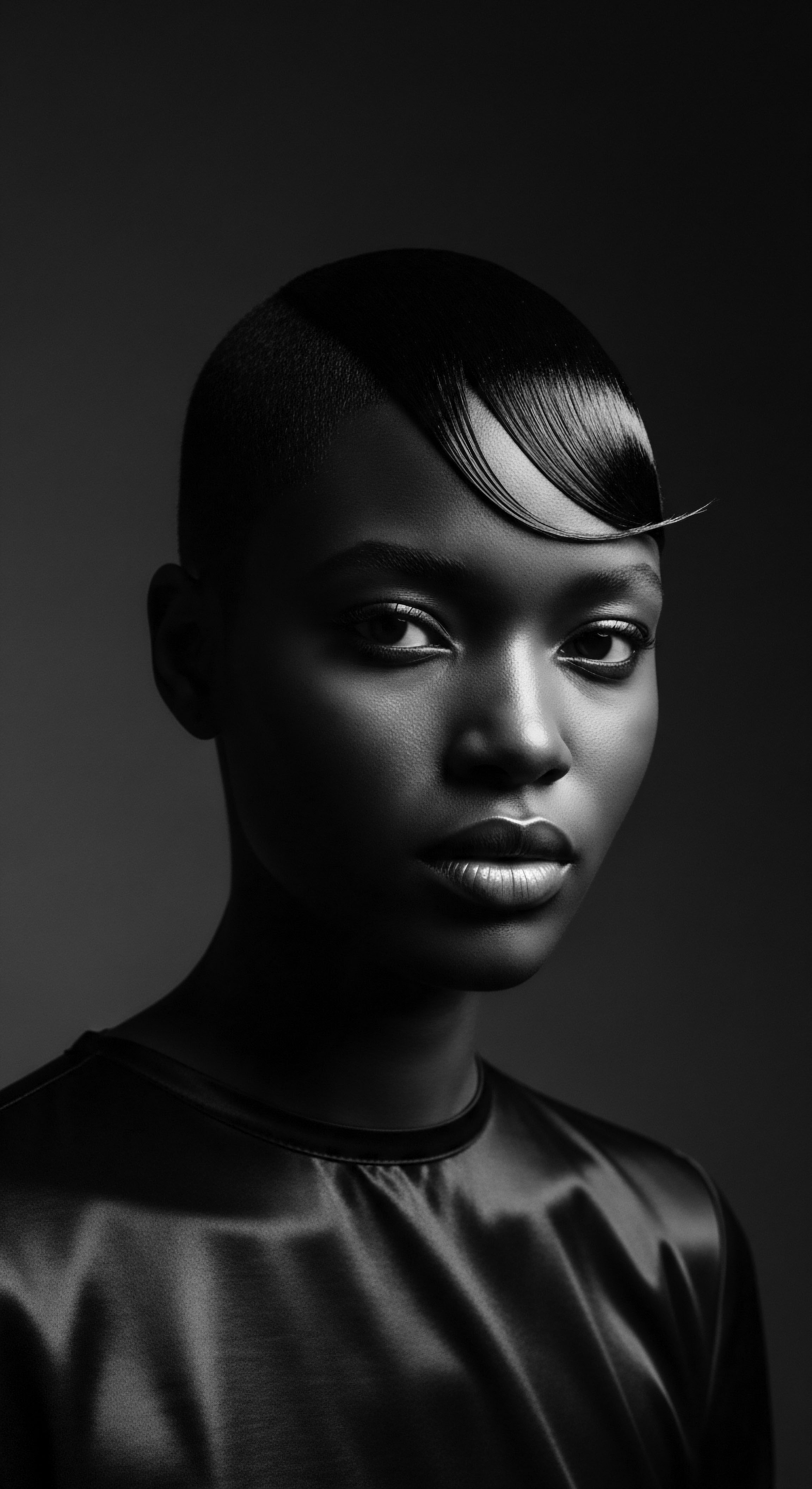
The Unbound Helix ❉ Scientific Validation of Ancestral Wisdom
A compelling example of Hair Care Innovation rooted in ancestral practices, which has garnered contemporary scientific attention, is the traditional use of Chebe Powder by the Basara Arab women of Chad. For centuries, these women have maintained remarkably long, strong hair, often reaching waist-length, through a consistent regimen involving this unique blend of natural ingredients. The practice involves mixing the powder, primarily derived from the Croton zambesicus plant, with natural oils and butters to form a paste, which is then applied to the hair lengths, avoiding the scalp. This ritual is repeated every few days, without washing the hair, to lock in moisture and prevent breakage.
Modern scientific inquiry has begun to unravel the underlying mechanisms that explain Chebe powder’s efficacy. While it does not directly stimulate hair growth from the follicle, its primary action lies in its ability to significantly reduce hair breakage, thereby allowing the hair to retain the length it naturally grows. The components within Chebe powder, including Croton Zambesicus Seeds, Mahllaba Seeds (cherry kernels), Misik Resin, and Cloves, contribute to its benefits.
Research in cosmetic chemistry indicates that the botanical compounds, rich in fatty acids, proteins, and antioxidants, fortify the hair’s cuticle layer. This fortification makes strands more resistant to environmental damage, heat, and friction, which are common culprits of breakage in textured hair.
Chebe powder’s ancestral efficacy for length retention in textured hair is increasingly affirmed by modern scientific understanding of its breakage-reducing properties.
Furthermore, certain elements in Chebe powder exhibit mild antimicrobial and anti-inflammatory properties, contributing to a healthier scalp environment. A nourished, healthy scalp is foundational for supporting stronger hair growth. The traditional method of application, focusing on the hair shaft and avoiding the scalp, also aligns with scientific understanding, preventing potential buildup or irritation while maximizing the benefits to the hair strand itself. This demonstrates a sophisticated, empirically developed ancestral Hair Care Innovation that predates modern laboratories.
A study on African plants used in hair treatment and care identified 68 species, with 30 of them having research associated with hair growth and general hair care, focusing on mechanisms like 5α-reductase inhibition and vascular endothelial growth factor. (Cosmetopoeia of African Plants in Hair Treatment and Care ❉ Topical Nutrition and the Antidiabetic Connection?, 2024, p. 2) This statistic underscores the vast, often untapped, potential of traditional African ethnobotanical knowledge in informing contemporary Hair Care Innovation. It reveals a long-standing scientific understanding, albeit expressed through ancestral wisdom, of the plant kingdom’s profound capacity to support hair health.
The implications for Hair Care Innovation are substantial. This academic meaning compels us to move beyond a Eurocentric framework of beauty and science, embracing the depth of knowledge embedded in diverse cultural practices. It suggests that future innovations should not merely seek to mimic straight hair textures but rather to optimize the inherent qualities of textured hair, celebrating its strength, versatility, and unique structure. This requires collaborative research that bridges ethnobotanical studies with advanced cosmetic science, ensuring that new products and practices are culturally resonant and scientifically sound.
- Morphological Understanding ❉ Textured hair, with its elliptical cross-section and curved hair follicles, is inherently more prone to knotting and tangling compared to straight hair. It also tends to have decreased water content and sebaceous gland activity, leading to increased dryness. Hair Care Innovation must address these specific structural and physiological attributes.
- Biochemical Fortification ❉ Research into traditional ingredients like Chebe powder validates the ancestral understanding of botanical compounds that can strengthen the hair cuticle, making strands more resistant to mechanical stress and environmental factors. This offers pathways for developing products that fortify hair from within.
- Holistic Scalp Health ❉ Many ancestral practices emphasized scalp health as the foundation for healthy hair. Modern science confirms the importance of a balanced scalp microbiome and proper nourishment for optimal hair growth. Innovations that integrate traditional herbal knowledge with dermatological understanding can lead to more effective scalp treatments.
The long-term consequences of a truly academic approach to Hair Care Innovation include a more inclusive and effective global beauty industry, one that respects and integrates the rich heritage of textured hair. This leads to products that are not only safer and more efficacious but also deeply affirming for individuals of Black and mixed-race descent, fostering a sense of pride in their natural hair. The success of this approach hinges on a commitment to rigorous, culturally sensitive research that elevates ancestral wisdom to its rightful place alongside modern scientific discovery.
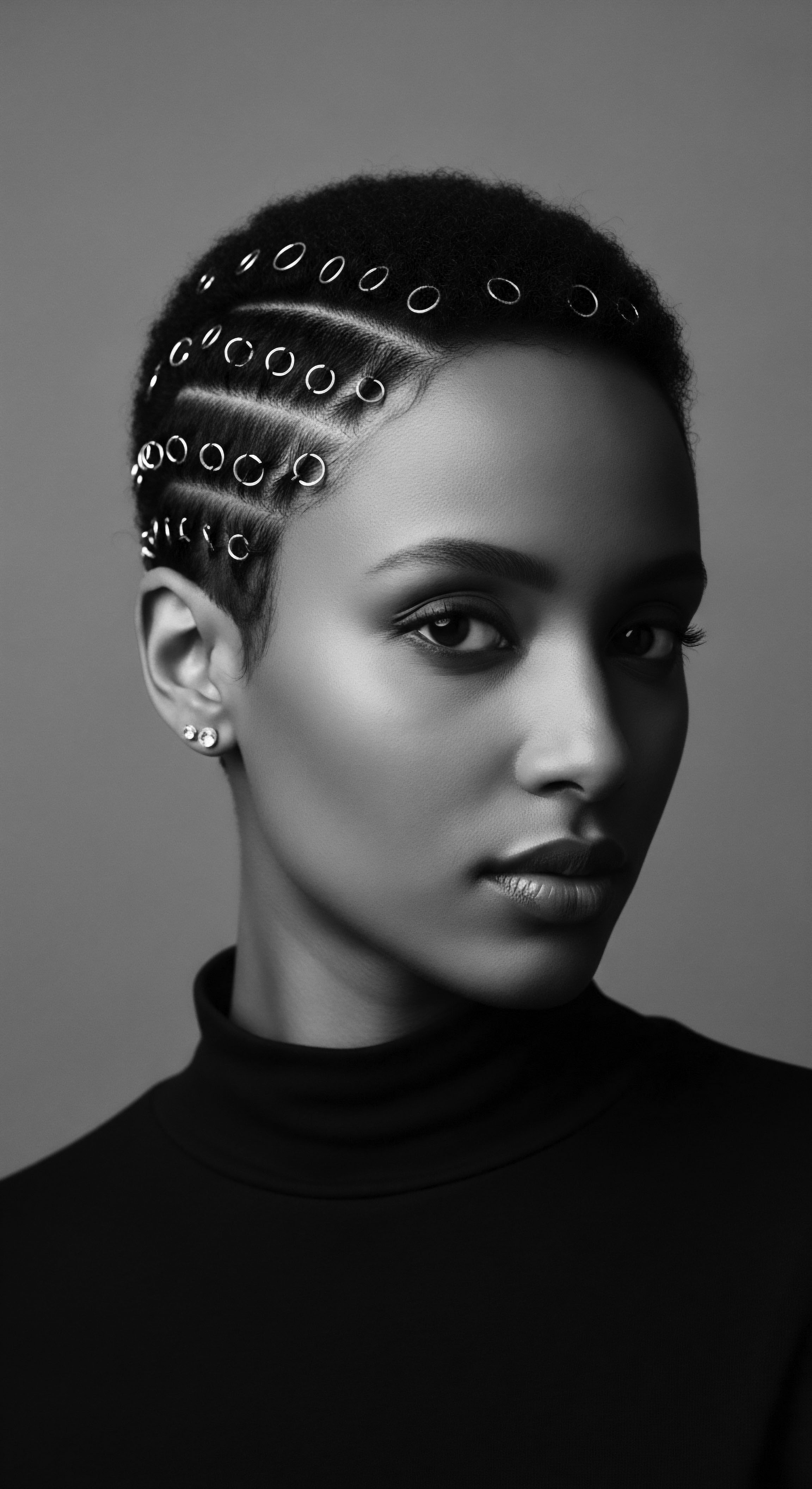
Reflection on the Heritage of Hair Care Innovation
The journey through Hair Care Innovation, particularly as it pertains to textured hair, unfurls as a profound meditation on continuity and resilience. It is a living testament to the enduring spirit of communities who have, across centuries and continents, found ways to adorn, protect, and celebrate their crowns. The ‘Soul of a Strand’ ethos, which guides Roothea’s mission, recognizes that each curl, coil, and wave carries an ancestral story, a whisper of traditions passed down through the hands of mothers, aunties, and communal caregivers. This narrative transcends mere aesthetics; it speaks to survival, identity, and the unwavering assertion of self in the face of historical erasure.
The innovation we observe today, whether in a scientifically formulated deep conditioner or a revitalized ancient oiling practice, is not a sudden genesis. Instead, it is a continuation of a tender thread, stretching from the elemental biology of hair and the ancient practices of African civilizations to the vibrant, diverse expressions of Black and mixed-race hair in the present moment. From the meticulous care rituals of pre-colonial West Africa, where hair conveyed status and spiritual connection, to the ingenious use of cornrows as maps during enslavement, and the defiant Afros of the Civil Rights era, each chapter reflects a unique form of Hair Care Innovation. It is a story of profound adaptation, where necessity sparked creativity, and cultural meaning infused every strand.
The ongoing pursuit of knowledge, whether through ethnobotanical surveys affirming the efficacy of traditional plants or through cosmetic chemistry dissecting the properties of natural ingredients, serves to illuminate this unbroken lineage of care. It is a call to honor the ingenuity of our ancestors, whose empirical understanding of hair health, often honed through generations of lived experience, laid the foundation for much of what we consider ‘new’ today. This reflection beckons us to approach hair care not as a fleeting trend, but as a sacred dialogue with our past, a celebration of our present, and a powerful shaping of our future.
The heritage of Hair Care Innovation is a testament to the enduring human spirit, finding beauty and strength in every strand across generations.
As we gaze upon the unbound helix of textured hair, we see not just its physical form, but the profound history it embodies. It is a history of resistance, creativity, and boundless beauty. This ongoing evolution of Hair Care Innovation, deeply rooted in ancestral wisdom and propelled by a contemporary desire for holistic wellbeing, assures that the ‘living library’ of Roothea will continue to expand, offering insights that nourish not only the hair but also the very soul of those who wear it. The past informs the present, guiding us toward a future where every head of textured hair is seen, celebrated, and cared for with the reverence it deserves.
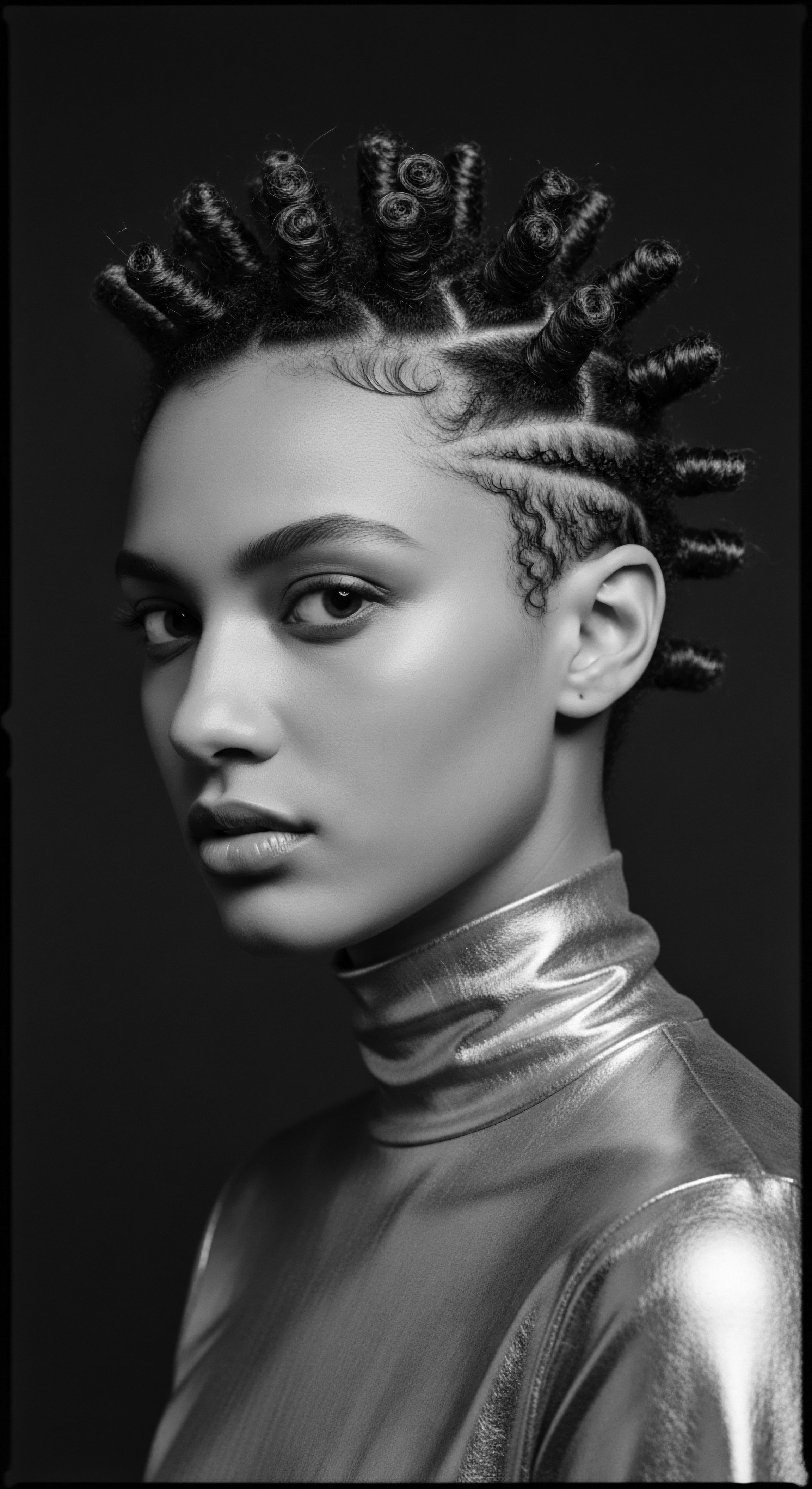
References
- Afriklens. (2024). African Hairstyles ❉ Cultural Significance and Legacy.
- Byrd, A. & Tharps, L. L. (2001). Hair Story ❉ Untangling the Roots of Black Hair in America. St. Martin’s Press.
- Chebeauty. (2023). The Power of Chebe Powder ❉ A Case Study in Hair Growth.
- Chebeauty. (n.d.). Chebe Powder.
- Croda Beauty. (n.d.). Textured hair – Hair care trend.
- ER African Online Store. (2025). Unleash Your Hair Growth Potential With Chebe Powder.
- Harper’s BAZAAR. (2021). What Is Chebe Powder, and Can it Really Help With Hair Growth?
- Jahangir, R. (2015). How does black hair reflect black history? BBC News.
- JSTOR Daily. (2019). How Natural Black Hair at Work Became a Civil Rights Issue.
- Kodd Magazine. (2024). African hair tells a story and inspires the future.
- Library of Congress. (n.d.). Heavy is the Head ❉ Evolution of African Hair in America from the 17th c. to the 20th c.
- Mouchane, M. Taybi, H. Gouitaa, N. & Assem, N. (2022). Ethnobotanical Survey of Medicinal Plants used in the Treatment and Care of Hair in Karia ba Mohamed (Northern Morocco). Journal of Complementary Medicine & Alternative Healthcare, 12(4), 555845.
- Never the Less Inc. (n.d.). History of Black Hair Care.
- Oforiwa, A. (2023). The History and Culture of African Natural Hair ❉ From Ancient Times to Modern Trends. AMAKA Studio.
- Planet Ayurveda. (2021). What is Chebe Powder & How Effective is it As A Hair Mask?
- ResearchGate. (2024). Cosmetopoeia of African Plants in Hair Treatment and Care ❉ Topical Nutrition and the Antidiabetic Connection?
- SEVICH. (n.d.). Natural Hair Care ❉ Understanding Chebe Powder and Chebe Oil.
- SEVICH. (n.d.). Chebe Powder vs. Traditional Oils ❉ A Wholesaler’s Guide to Choosing the Best Hair Care Products.
- Smithsonian National Museum of African Art. (n.d.). Yoruba people and their cultural traditions.
- Substack. (2025). Ancestral Hair Rituals to Nourish Your Hair and Soul.
- The African American Museum of Iowa. (n.d.). History of Hair.
- The Radical Power of Black Women · Feminist Archive Exhibits. (n.d.). The Cultural Significance of Black Hair.
- Umthi. (2023). The Cultural Significance and Representation of Afro-Textured Hair.
- Wikipedia. (n.d.). African-American hair.
- World History Encyclopedia. (n.d.). African tribal cultures.
